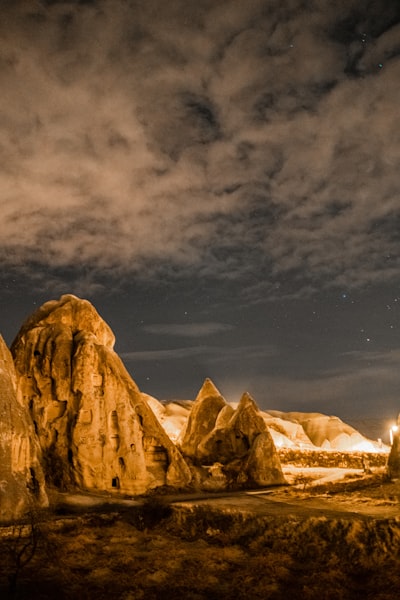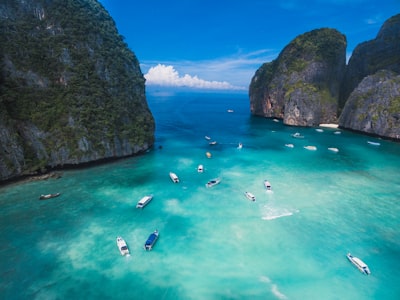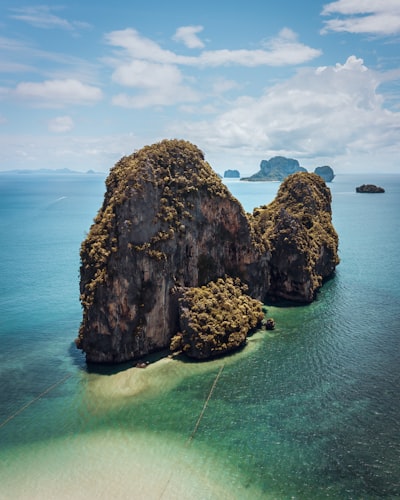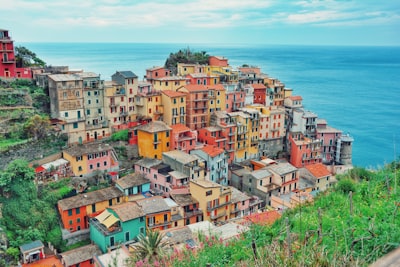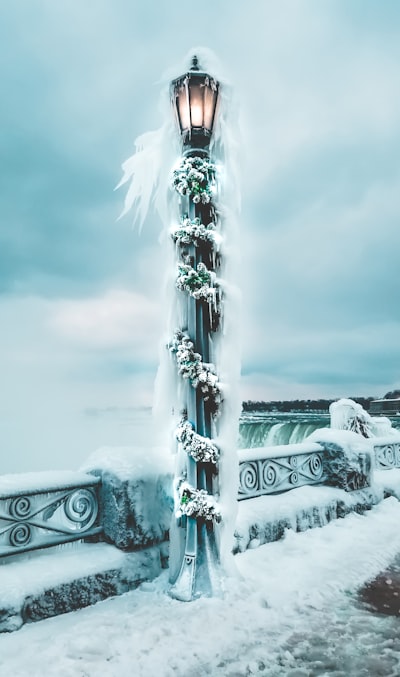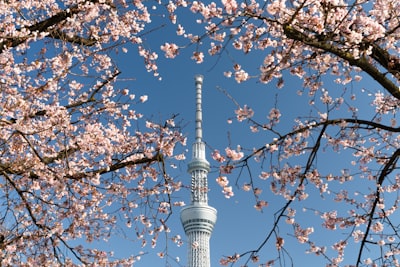Mount Snowdon: At 3,560 feet (1,085 meters), Mount Snowdon is the highest peak in Wales and one of the most popular attractions in Snowdonia. Visitors can reach the summit by hiking, taking the Snowdon Mountain Railway, or using the Llanberis Path. Llyn Ogwen: This stunning glacial lake is surrounded by the dramatic peaks of the Glyderau and Carneddau mountain ranges. It's a popular spot for hiking, fishing, and enjoying the serene natural beauty. Beddgelert: This charming village is known for its picturesque streets, historic buildings, and the legend of the faithful dog, Gelert. Explore the village's shops, cafes, and the Gelert's Grave memorial. Zip World: Experience the thrill of the world's fastest zip line at Zip World Velocity, where you can soar over the historic Penrhyn Quarry at speeds up to 100 mph (160 km/h). Portmeirion: This unique Italian-style village was designed by architect Clough Williams-Ellis and is a popular filming location. Wander through the colorful buildings, gardens, and beaches. Conwy Castle: This impressive 13th-century castle, a UNESCO World Heritage Site, offers stunning views of the surrounding countryside and the town of Conwy. Aber Falls: These beautiful waterfalls, located near the village of Abergwyngregyn, are a popular hiking destination with scenic trails and stunning views. Harlech Castle: Perched atop a rocky outcrop, this medieval castle offers panoramic views of the Snowdonia mountains and the Welsh coast. Cadair Idris: This majestic mountain, with its glacial lakes and dramatic ridges, is a popular destination for hikers and outdoor enthusiasts. Sygun Copper Mine: Explore the underground tunnels and chambers of this former copper mine, which offers a glimpse into the region's industrial heritage. These are just a few of the many must-see attractions in Snowdonia National Park. Whether you're seeking outdoor adventures, historic sites, or simply breathtaking natural scenery, this region of Wales has something to captivate every traveler.
Anhinga Trail: This iconic boardwalk trail offers a unique opportunity to observe a variety of wildlife, including the graceful anhinga bird, alligators, turtles, and a diverse array of wading birds. The trail provides an up-close encounter with the Everglades' wetland habitats. Gumbo Limbo Trail: Explore the lush, tropical hardwood hammock forest along this scenic trail, where you can spot the distinctive gumbo limbo trees, also known as the "tourist tree" due to their peeling, reddish bark. Mahogany Hammock: Venture into one of the largest remaining stands of ancient, towering mahogany trees in the United States. This tranquil trail showcases the Everglades' diverse plant life and provides a glimpse into the park's unique ecosystem. Shark Valley: Rent a bicycle or take a tram tour to explore this expansive, flat landscape, which is home to a variety of wildlife, including alligators, wading birds, and the elusive Florida panther. The Shark Valley Observation Tower offers panoramic views of the surrounding wetlands. Flamingo: Situated at the southern tip of the park, Flamingo is a hub for various recreational activities, such as kayaking, canoeing, and fishing. Explore the mangrove-lined waterways and keep an eye out for the iconic pink flamingos that give the area its name. Everglades Airboat Tours: Experience the Everglades from a different perspective by taking an exhilarating airboat tour. These high-speed boats allow you to navigate the shallow, grassy waterways and get up close with alligators, birds, and other wildlife. Eco Pond: This peaceful freshwater pond is a prime location for birdwatching, with the opportunity to spot a variety of wading birds, waterfowl, and migratory species. Everglades National Park is a unique and captivating destination that offers a wealth of natural wonders and opportunities for exploration. By visiting these must-see attractions, you'll gain a deeper appreciation for the Everglades' diverse ecosystems and the importance of preserving this remarkable natural treasure.
South Rim The South Rim is the most popular and accessible part of the Grand Canyon, offering stunning views and a variety of activities. The South Rim is open year-round and features several iconic viewpoints, including Mather Point, Yavapai Point, and Hermit's Rest, designed by renowned architect Frank Lloyd Wright. The Rim Trail, a 13-mile hiking path, provides easy access to these viewpoints and allows visitors to explore the canyon's edge. North Rim The North Rim is located approximately 220 miles from the South Rim and offers a more remote and less crowded experience. The North Rim is only open from mid-May to mid-October due to heavy snowfall during the winter months. Visitors can enjoy breathtaking views from the North Rim Visitor Center, the historic Grand Canyon Lodge, and the Bright Angel Point Trail, which offers panoramic vistas of the canyon. Havasu Falls Nestled within the Havasupai Indian Reservation, Havasu Falls is a stunning oasis with turquoise-blue waters and towering travertine formations. Access to Havasu Falls requires a permit and a strenuous 10-mile hike, but the breathtaking scenery is well worth the effort. Visitors can also explore the nearby Mooney Falls and Beaver Falls, creating a truly unforgettable experience. Skywalk The Grand Canyon Skywalk is a glass-bottomed bridge that extends 70 feet out over the edge of the canyon, providing visitors with a unique and thrilling perspective of the natural wonder. Located on the Hualapai Indian Reservation, the Skywalk offers panoramic views of the canyon and the Colorado River below. Helicopter Tours For a truly breathtaking aerial view of the Grand Canyon, consider taking a helicopter tour. These tours offer a bird's-eye perspective of the canyon's vast expanse, allowing visitors to see the intricate geological formations and stunning vistas from above. Rafting the Colorado River Adventurous travelers can experience the Grand Canyon from the Colorado River by embarking on a rafting expedition. These multi-day trips provide a unique opportunity to explore the canyon's inner gorge, with opportunities to hike, camp, and witness the canyon's diverse wildlife. Desert View Watchtower Designed by architect Mary Colter, the Desert View Watchtower is a historic landmark located on the South Rim of the Grand Canyon. Visitors can climb to the top of the tower for panoramic views of the canyon and the surrounding desert landscape. Geology Museum The Geology Museum, located at the South Rim Visitor Center, offers an in-depth look at the geological history of the Grand Canyon. Visitors can explore interactive exhibits, learn about the canyon's formation, and gain a deeper understanding of the region's unique geology. Bright Angel Trail The Bright Angel Trail is one of the most popular hiking trails in the Grand Canyon, offering a challenging but rewarding experience. The trail descends 4,380 feet to the Colorado River, providing hikers with stunning views and the opportunity to explore the canyon's inner depths. Hermit's Rest Designed by Frank Lloyd Wright, Hermit's Rest is a unique and architecturally significant building located on the South Rim. Visitors can explore the building, which houses a gift shop and snack bar, and enjoy the stunning views of the canyon from the surrounding area. These are the must-see attractions for your trip to the Grand Canyon National Park. From the breathtaking vistas of the South and North Rims to the hidden oases of Havasu Falls and the thrilling Skywalk, this iconic destination offers a wealth of experiences for travelers of all interests and abilities.
Going-to-the-Sun Road: This iconic 50-mile scenic drive takes you through the heart of Glacier National Park, offering breathtaking views of glaciers, alpine meadows, and towering mountain peaks. Stop at the Logan Pass Visitor Center to enjoy the stunning vistas and hike the nearby trails. Grinnell Glacier: One of the park's most famous glaciers, Grinnell Glacier is a stunning sight to behold. The hike to Grinnell Glacier is a challenging but rewarding experience, offering panoramic views of the glacier, turquoise-colored lakes, and the surrounding mountains. Avalanche Lake: This serene and picturesque lake is a popular destination for hikers. The 4.5-mile round-trip hike to Avalanche Lake takes you through a lush forest and past a stunning waterfall, culminating in the breathtaking view of the lake and the surrounding mountains. Waterton-Glacier International Peace Park: Glacier National Park is part of the Waterton-Glacier International Peace Park, a UNESCO World Heritage Site shared between the United States and Canada. Explore the Canadian side of the park for a unique perspective and additional hiking opportunities. Hidden Lake Overlook: The hike to the Hidden Lake Overlook is a must-do for visitors to Glacier National Park. The 5.4-mile round-trip trail takes you through alpine meadows and past stunning glacial lakes, culminating in a breathtaking view of the Hidden Lake and the surrounding peaks. Bowman Lake: Tucked away in the northwest corner of the park, Bowman Lake is a hidden gem. Enjoy the serene and peaceful atmosphere of this stunning lake, surrounded by towering mountains and lush forests.

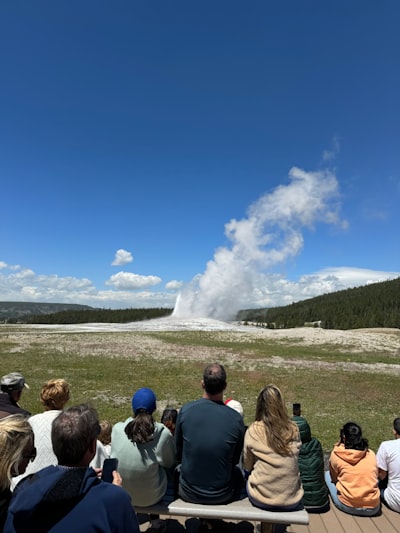

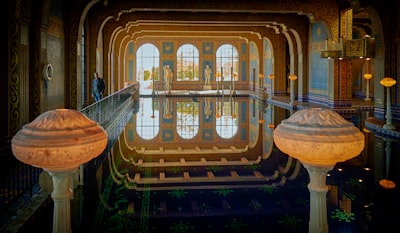
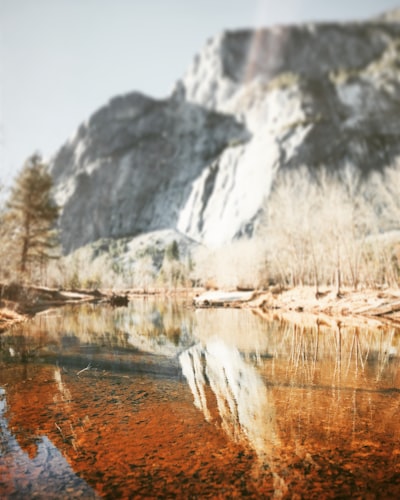

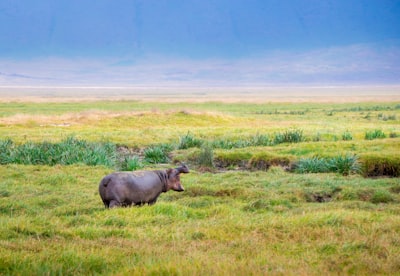
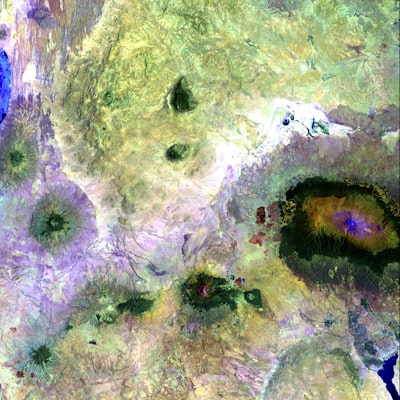
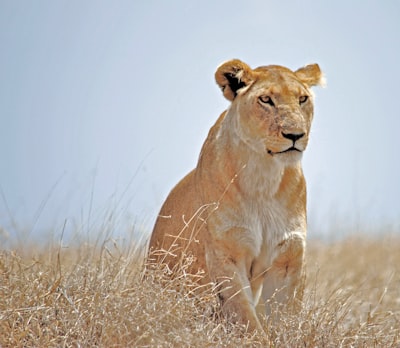
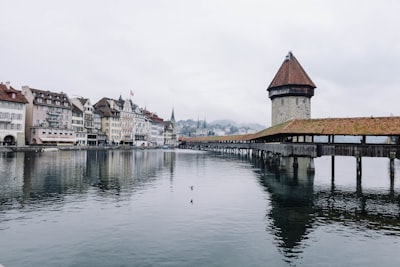
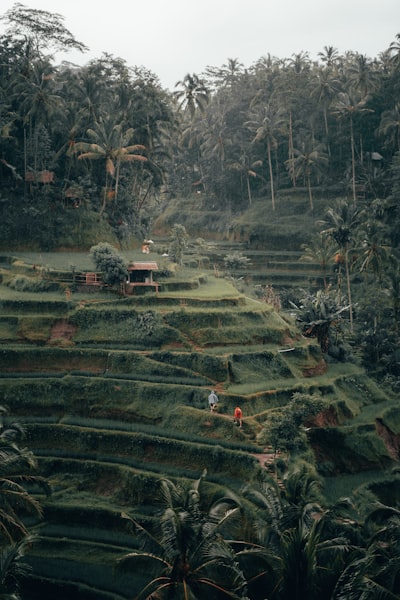
1. Mount Batur: This active volcano is a popular hiking destination, offering breathtaking views of the surrounding landscape and the opportunity to witness the sunrise from the summit. 2. Tegalalang Rice Terraces: These iconic, cascading rice paddies are a UNESCO World Heritage Site and a testament to the ingenuity of Balinese farmers. Visitors can stroll through the terraces and experience the serene beauty of the landscape. 3. Tirta Gangga Water Palace: This former royal water garden features ornate fountains, pools, and statues, creating a serene and picturesque setting for visitors to explore. 4. Campuhan Ridge Walk: This scenic hiking trail offers stunning views of the Ayung River valley and the surrounding lush, green hills. The walk is a popular activity for both nature enthusiasts and those seeking a peaceful escape. 5. Goa Gajah (Elephant Cave): This ancient archaeological site features intricate carvings and a hidden meditation cave, providing a glimpse into Bali's rich cultural heritage. 6. Tukad Cepung Waterfall: This breathtaking waterfall is hidden within a lush, forested canyon, creating a serene and otherworldly atmosphere for visitors to enjoy. 7. Tanah Lot Temple: This iconic Hindu temple is perched atop a rocky outcrop, surrounded by crashing waves, and is a popular destination for both spiritual and photographic experiences. 8. Ubud Monkey Forest: This nature reserve is home to a large population of grey long-tailed macaques, offering visitors the opportunity to observe these fascinating primates in their natural habitat. These are just a few of the many must-see attractions that Bali National Park has to offer. Whether you're interested in hiking, cultural exploration, or simply soaking in the natural beauty of the island, Bali National Park is sure to leave a lasting impression on your travels.
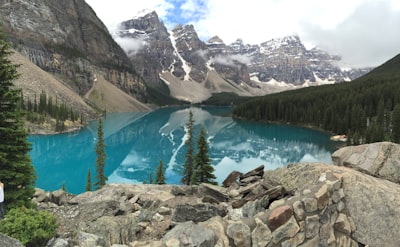
Lake Louise: Undoubtedly one of the most iconic destinations in Banff, Lake Louise is a turquoise-colored glacial lake surrounded by the towering peaks of the Rocky Mountains. Visitors can enjoy the stunning views from the shores, hike around the lake, or take a canoe out on the serene waters. Moraine Lake: Nestled in the Valley of the Ten Peaks, Moraine Lake is another stunning glacial lake that offers breathtaking vistas. The vibrant blue-green hue of the water and the dramatic mountain backdrop make this one of the most photographed locations in Banff. Banff Gondola: For a panoramic view of the Banff townsite and the surrounding mountains, take a ride on the Banff Gondola. The gondola whisks you up to the top of Sulphur Mountain, where you can enjoy the stunning 360-degree views from the observation deck. Bow Falls: Located just a short walk from the Banff townsite, the Bow Falls are a powerful and impressive waterfall that cascades over the rocky terrain. Visitors can admire the falls from various viewpoints and even hike along the riverbanks. Johnston Canyon: This scenic hike takes you through a narrow canyon with stunning waterfalls and turquoise-colored pools. The trail offers both an easy lower-level hike and a more challenging upper-level hike that leads to the breathtaking Ink Pots. Icefields Parkway: The Icefields Parkway is a scenic highway that connects Banff National Park to Jasper National Park, offering stunning vistas of glaciers, mountain peaks, and pristine lakes along the way. Stop at the Columbia Icefield and take a ride on the Glacier Skywalk for a unique perspective of the glacial landscape. Vermilion Lakes: These serene lakes, located just a short drive from the Banff townsite, offer stunning reflections of the surrounding mountains and wildlife. It's a popular spot for birdwatching, photography, and simply taking in the peaceful natural beauty. Tunnel Mountain: For a relatively easy hike with panoramic views, consider tackling the Tunnel Mountain Trail. The summit offers a breathtaking panorama of the Banff townsite, the Bow River, and the surrounding mountain ranges. Banff Upper Hot Springs: After a day of exploring, relax and unwind at the Banff Upper Hot Springs, a natural hot spring-fed pool with stunning mountain views. Banff Legacy Trail: This multi-use trail system connects the Banff townsite with the nearby communities of Canmore and Lake Louise, offering a scenic and car-free way to explore the park's natural wonders. Sunshine Meadows: For a high-altitude hike through alpine meadows and past glacial lakes, head to Sunshine Meadows. The stunning vistas and diverse wildflowers make this a must-visit destination in Banff. Lake Minnewanka: Offering a variety of outdoor activities, Lake Minnewanka is a large glacial lake that's popular for boating, fishing, and hiking. The scenic lakeshore trail and the opportunity to spot wildlife make this a great addition to your Banff itinerary. Peyto Lake: Renowned for its vibrant turquoise-blue color, Peyto Lake is a stunning glacial lake that can be accessed via a short hike from the Icefields Parkway. The viewpoint offers breathtaking panoramic views of the lake and the surrounding mountains. Banff National Park is a true natural wonder, offering a diverse array of landscapes, wildlife, and outdoor activities. Whether you're seeking breathtaking vistas, serene lakes, or challenging hikes, this destination has something to captivate every traveler. By exploring these must-see attractions, you'll be able to fully immerse yourself in the beauty and wonder of Banff National Park.

Anhinga Trail: This iconic boardwalk trail offers a unique opportunity to observe a variety of wildlife, including the graceful anhinga bird, alligators, turtles, and a diverse array of wading birds. The trail provides an up-close encounter with the Everglades' wetland habitats. Gumbo Limbo Trail: Explore the lush, tropical hardwood hammock forest along this scenic trail, where you can spot the distinctive gumbo limbo trees, also known as the "tourist tree" due to their peeling, reddish bark. Mahogany Hammock: Venture into one of the largest remaining stands of ancient, towering mahogany trees in the United States. This tranquil trail showcases the Everglades' diverse plant life and provides a glimpse into the park's unique ecosystem. Shark Valley: Rent a bicycle or take a tram tour to explore this expansive, flat landscape, which is home to a variety of wildlife, including alligators, wading birds, and the elusive Florida panther. The Shark Valley Observation Tower offers panoramic views of the surrounding wetlands. Flamingo: Situated at the southern tip of the park, Flamingo is a hub for various recreational activities, such as kayaking, canoeing, and fishing. Explore the mangrove-lined waterways and keep an eye out for the iconic pink flamingos that give the area its name. Everglades Airboat Tours: Experience the Everglades from a different perspective by taking an exhilarating airboat tour. These high-speed boats allow you to navigate the shallow, grassy waterways and get up close with alligators, birds, and other wildlife. Eco Pond: This peaceful freshwater pond is a prime location for birdwatching, with the opportunity to spot a variety of wading birds, waterfowl, and migratory species. Everglades National Park is a unique and captivating destination that offers a wealth of natural wonders and opportunities for exploration. By visiting these must-see attractions, you'll gain a deeper appreciation for the Everglades' diverse ecosystems and the importance of preserving this remarkable natural treasure.

Milford Sound: Arguably the most famous of Fiordland's fiords, Milford Sound is a dramatic landscape of towering cliffs, cascading waterfalls, and abundant wildlife. Cruise through the serene waters and witness the awe-inspiring Mitre Peak, one of the most photographed mountains in New Zealand. Doubtful Sound: Larger and more remote than Milford Sound, Doubtful Sound offers a more tranquil and secluded experience. Explore the pristine fiord by boat or kayak, and keep an eye out for bottlenose dolphins, fur seals, and the rare Fiordland crested penguin. Lake Manapouri: This stunning glacial lake is surrounded by the rugged peaks of the Kepler and Murchison Mountains. Take a scenic drive around the lake or hike one of the many trails for breathtaking views. Kepler Track: One of New Zealand's Great Walks, the Kepler Track offers a challenging multi-day hike through diverse landscapes, including alpine meadows, beech forests, and glacial valleys. Hollyford Track: For a more leisurely hike, the Hollyford Track takes you through ancient rainforests, past cascading waterfalls, and along the stunning Hollyford River. Fiordland National Park is a true natural wonder, offering a unique and unforgettable experience for any traveler. Whether you choose to explore the fiords by boat, hike through the pristine wilderness, or simply take in the breathtaking scenery, this destination is sure to leave a lasting impression.
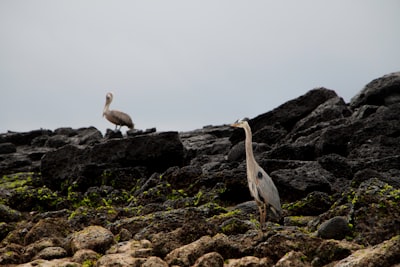
1. Bartolomé Island: This small volcanic island is known for its iconic Pinnacle Rock, a towering volcanic formation that offers stunning views of the surrounding landscape. Visitors can hike to the top of the island for panoramic vistas and observe the unique wildlife, including Galapagos penguins, sea lions, and marine iguanas. 2. Genovesa Island (Tower Island): Genovesa is a birdwatcher's paradise, home to a vast array of seabirds, including the red-footed booby, the Nazca booby, and the magnificent frigatebird. Visitors can explore the island's trails and observe these incredible birds in their natural habitat. 3. Santa Cruz Island: As the most populous island in the Galapagos, Santa Cruz offers a wealth of attractions. The Charles Darwin Research Station is a must-visit, where visitors can learn about the islands' unique ecosystem and the conservation efforts to protect it. The island also boasts the stunning Los Gemelos (The Twins), a pair of volcanic craters, and the opportunity to see giant tortoises in their natural habitat. 4. Espanola Island (Hood Island): Espanola is known for its diverse and abundant wildlife, including the waved albatross, the only tropical albatross species in the world. Visitors can witness the courtship displays of these majestic birds and observe other species such as the marine iguana and the Galapagos hawk. 5. Fernandina Island: As the youngest and most volcanically active island in the Galapagos, Fernandina is a true natural wonder. Visitors can explore the island's lava fields and observe the unique wildlife, including the flightless cormorant, the Galapagos penguin, and the Galapagos marine iguana. 6. Floreana Island: Floreana is steeped in history, with sites like Post Office Bay, where visitors can leave and retrieve postcards, and the Baroness Viewpoint, which offers stunning views of the island's landscape. The island is also home to the famous "Flamingo Lagoon," where visitors can observe these vibrant birds in their natural habitat. 7. North Seymour Island: North Seymour is a small island known for its large colonies of frigatebirds and blue-footed boobies. Visitors can observe these birds' courtship displays and witness the unique behaviors of the Galapagos land iguana. 8. Rabida Island: Rabida is known for its striking red-sand beaches, which contrast beautifully with the turquoise waters. Visitors can explore the island's trails and observe a variety of bird species, including the Galapagos hawk and the brown pelican. 9. San Cristóbal Island: As the easternmost island in the Galapagos, San Cristóbal is home to the town of Puerto Baquerizo Moreno, the capital of the Galapagos Province. Visitors can explore the island's beaches, hike to the top of Cerro Tijeretas for stunning views, and visit the Interpretation Center, which provides information about the islands' history and conservation efforts. 10. Santiago Island: Santiago, also known as James Island, is a diverse and fascinating destination. Visitors can explore the island's volcanic landscapes, observe the Galapagos fur seal, and visit the historic Sullivan Bay, which features impressive lava flows. These are just a few of the many must-see attractions in the Galapagos Islands. Each island offers its own unique blend of natural wonders, wildlife, and historical significance, making the Galapagos an unforgettable destination for any traveler.

Going-to-the-Sun Road: This iconic 50-mile scenic drive takes you through the heart of Glacier National Park, offering breathtaking views of glaciers, alpine meadows, and towering mountain peaks. Stop at the Logan Pass Visitor Center to enjoy the stunning vistas and hike the nearby trails. Grinnell Glacier: One of the park's most famous glaciers, Grinnell Glacier is a stunning sight to behold. The hike to Grinnell Glacier is a challenging but rewarding experience, offering panoramic views of the glacier, turquoise-colored lakes, and the surrounding mountains. Avalanche Lake: This serene and picturesque lake is a popular destination for hikers. The 4.5-mile round-trip hike to Avalanche Lake takes you through a lush forest and past a stunning waterfall, culminating in the breathtaking view of the lake and the surrounding mountains. Waterton-Glacier International Peace Park: Glacier National Park is part of the Waterton-Glacier International Peace Park, a UNESCO World Heritage Site shared between the United States and Canada. Explore the Canadian side of the park for a unique perspective and additional hiking opportunities. Hidden Lake Overlook: The hike to the Hidden Lake Overlook is a must-do for visitors to Glacier National Park. The 5.4-mile round-trip trail takes you through alpine meadows and past stunning glacial lakes, culminating in a breathtaking view of the Hidden Lake and the surrounding peaks. Bowman Lake: Tucked away in the northwest corner of the park, Bowman Lake is a hidden gem. Enjoy the serene and peaceful atmosphere of this stunning lake, surrounded by towering mountains and lush forests.

South Rim The South Rim is the most popular and accessible part of the Grand Canyon, offering stunning views and a variety of activities. The South Rim is open year-round and features several iconic viewpoints, including Mather Point, Yavapai Point, and Hermit's Rest, designed by renowned architect Frank Lloyd Wright. The Rim Trail, a 13-mile hiking path, provides easy access to these viewpoints and allows visitors to explore the canyon's edge. North Rim The North Rim is located approximately 220 miles from the South Rim and offers a more remote and less crowded experience. The North Rim is only open from mid-May to mid-October due to heavy snowfall during the winter months. Visitors can enjoy breathtaking views from the North Rim Visitor Center, the historic Grand Canyon Lodge, and the Bright Angel Point Trail, which offers panoramic vistas of the canyon. Havasu Falls Nestled within the Havasupai Indian Reservation, Havasu Falls is a stunning oasis with turquoise-blue waters and towering travertine formations. Access to Havasu Falls requires a permit and a strenuous 10-mile hike, but the breathtaking scenery is well worth the effort. Visitors can also explore the nearby Mooney Falls and Beaver Falls, creating a truly unforgettable experience. Skywalk The Grand Canyon Skywalk is a glass-bottomed bridge that extends 70 feet out over the edge of the canyon, providing visitors with a unique and thrilling perspective of the natural wonder. Located on the Hualapai Indian Reservation, the Skywalk offers panoramic views of the canyon and the Colorado River below. Helicopter Tours For a truly breathtaking aerial view of the Grand Canyon, consider taking a helicopter tour. These tours offer a bird's-eye perspective of the canyon's vast expanse, allowing visitors to see the intricate geological formations and stunning vistas from above. Rafting the Colorado River Adventurous travelers can experience the Grand Canyon from the Colorado River by embarking on a rafting expedition. These multi-day trips provide a unique opportunity to explore the canyon's inner gorge, with opportunities to hike, camp, and witness the canyon's diverse wildlife. Desert View Watchtower Designed by architect Mary Colter, the Desert View Watchtower is a historic landmark located on the South Rim of the Grand Canyon. Visitors can climb to the top of the tower for panoramic views of the canyon and the surrounding desert landscape. Geology Museum The Geology Museum, located at the South Rim Visitor Center, offers an in-depth look at the geological history of the Grand Canyon. Visitors can explore interactive exhibits, learn about the canyon's formation, and gain a deeper understanding of the region's unique geology. Bright Angel Trail The Bright Angel Trail is one of the most popular hiking trails in the Grand Canyon, offering a challenging but rewarding experience. The trail descends 4,380 feet to the Colorado River, providing hikers with stunning views and the opportunity to explore the canyon's inner depths. Hermit's Rest Designed by Frank Lloyd Wright, Hermit's Rest is a unique and architecturally significant building located on the South Rim. Visitors can explore the building, which houses a gift shop and snack bar, and enjoy the stunning views of the canyon from the surrounding area. These are the must-see attractions for your trip to the Grand Canyon National Park. From the breathtaking vistas of the South and North Rims to the hidden oases of Havasu Falls and the thrilling Skywalk, this iconic destination offers a wealth of experiences for travelers of all interests and abilities.

1. Snorkeling and Scuba Diving: The Great Barrier Reef is renowned for its diverse and vibrant marine life, making it a premier destination for snorkeling and scuba diving. Explore the colorful coral formations, encounter a wide variety of tropical fish, and potentially spot majestic sea turtles, manta rays, and even the elusive whale shark. 2. Whitsunday Islands: The Whitsunday Islands, a group of 74 islands located within the Great Barrier Reef, offer stunning natural beauty and a range of activities. Visit the iconic Whitehaven Beach, known for its pristine white sand and turquoise waters, and explore the lush, tropical landscapes of the islands. 3. Heart Reef: This naturally formed, heart-shaped coral reef is a true natural wonder and a popular spot for aerial tours and scenic flights. Witness the stunning contrast of the vibrant blue waters and the intricate coral formations from above. 4. Reef Encounters: Take a day trip or a multi-day cruise to experience the reef up close. Hop on a glass-bottom boat, go on a guided snorkeling tour, or even try your hand at scuba diving to immerse yourself in the underwater world of the Great Barrier Reef. 5. Cairns and Port Douglas: These two coastal cities serve as gateways to the Great Barrier Reef and offer a range of activities and attractions. In Cairns, visit the Cairns Esplanade, explore the Cairns Botanic Gardens, and take a scenic train ride to the Kuranda Rainforest. In Port Douglas, relax on the beautiful Four Mile Beach and explore the charming town center. 6. Lizard Island: This remote, luxury island resort offers a unique opportunity to experience the Great Barrier Reef in a more secluded and exclusive setting. Enjoy world-class snorkeling and diving, indulge in gourmet cuisine, and immerse yourself in the natural beauty of the island. 7. Heron Island: Known for its exceptional bird-watching opportunities, Heron Island is a nature lover's paradise. Spot a variety of seabirds, including the iconic frigate bird, and explore the island's diverse ecosystems, including the coral reef and the surrounding mangrove forests. 8. Mossman Gorge: Located within the Daintree Rainforest, Mossman Gorge is a stunning natural attraction that offers a glimpse into the ancient, lush landscapes of the region. Take a guided tour, hike through the rainforest, and cool off in the refreshing, crystal-clear waters of the gorge. 9. Great Barrier Reef Marine Park: The Great Barrier Reef Marine Park is a UNESCO World Heritage Site and a protected area that covers a vast expanse of the reef. Explore the park's various visitor centers, learn about the reef's ecology and conservation efforts, and participate in educational activities and guided tours. 10. Scenic Flights and Helicopter Tours: For a truly breathtaking perspective of the Great Barrier Reef, consider taking a scenic flight or a helicopter tour. Soar above the vibrant blue waters, the intricate coral formations, and the stunning islands, capturing unforgettable aerial views of this natural wonder.

Iguazu National Park (Argentina): Iguazu National Park is a UNESCO World Heritage Site and home to the Argentine side of the Iguazu Falls. The park offers several different trails and viewpoints that allow visitors to experience the falls from various angles. The most famous is the Garganta del Diablo (Devil's Throat), a U-shaped waterfall that is the largest of the 275 falls that make up the Iguazu Falls system. Other must-see attractions within the park include the Sendero Inferior (Lower Trail), which provides a close-up view of the falls, and the Sendero Superior (Upper Trail), which offers a panoramic perspective. Iguaçu National Park (Brazil): The Brazilian side of the Iguazu Falls is equally impressive and offers a unique perspective of the falls. The Iguaçu National Park features several different viewpoints, including the Mirante da Garganta do Diabo (Devil's Throat Viewpoint), which provides a breathtaking view of the U-shaped waterfall. The Trilha das Cataratas (Waterfall Trail) is another must-see, offering a series of walkways and platforms that allow visitors to get up close and personal with the falls. Macuco Safari: For a more adventurous experience, consider taking the Macuco Safari, a boat tour that takes visitors right up to the base of the falls. This thrilling ride provides a unique perspective of the falls and an opportunity to get soaked by the powerful spray. Parque das Aves (Bird Park): Located just outside of the Iguazu National Park, the Parque das Aves is a must-visit attraction for bird lovers. The park is home to over 1,000 birds from 150 different species, including many native to the region. Itaipu Dam: While not directly related to the Iguazu Falls, the Itaipu Dam is a fascinating engineering feat that is worth a visit. The dam, located on the border of Brazil and Paraguay, is the world's largest operational hydroelectric power plant and offers guided tours that provide insight into its construction and operation. Hito Tres Fronteras (Three Borders Landmark): This landmark, located at the confluence of the Iguazu and Paraná rivers, marks the point where Argentina, Brazil, and Paraguay meet. Visitors can enjoy panoramic views of the rivers and the surrounding landscape. Cataratas JL: For a unique perspective of the Iguazu Falls, consider taking a helicopter tour with Cataratas JL. This thrilling experience provides a bird's-eye view of the falls and the surrounding landscape. Salto Moconá: While not part of the Iguazu Falls system, the Salto Moconá is another impressive waterfall located in the region. This horseshoe-shaped waterfall is the second-largest in Argentina and is a popular destination for adventure seekers. Jesuit Ruins of São Miguel das Missões: Located in Brazil, the Jesuit Ruins of São Miguel das Missões are a UNESCO World Heritage Site that offer a glimpse into the region's rich cultural history. The ruins, which date back to the 17th century, include the remains of a Jesuit mission and church. Foz do Iguaçu: The city of Foz do Iguaçu, located on the Brazilian side of the Iguazu Falls, is a vibrant and lively destination in its own right. Visitors can explore the city's bustling markets, try local cuisine, and enjoy the lively nightlife. In addition to these must-see attractions, there are also numerous opportunities for outdoor activities and adventure in the Iguazu region. Hiking, kayaking, and zip-lining are just a few of the exciting options available to visitors. Overall, the Iguazu Falls and the surrounding region offer a truly unique and unforgettable travel experience. Whether you're seeking breathtaking natural beauty, cultural immersion, or adrenaline-fueled adventure, this destination has something to offer everyone.
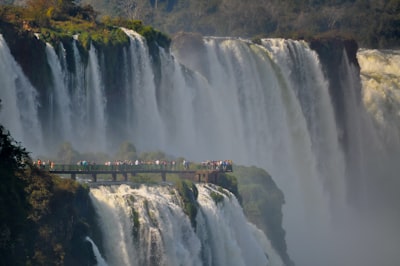
Iguazu National Park (Brazil) Iguazu National Park, located on the Brazilian side of the falls, offers a unique perspective and a chance to witness the sheer power and grandeur of Iguazu Falls. The park's main attraction is the Garganta do Diabo (Devil's Throat), a U-shaped, 82-meter-high (269 feet) waterfall that is the largest and most impressive of the falls. Visitors can take a scenic walkway that leads to the edge of the Devil's Throat, providing a breathtaking view of the cascading water. The park also features several other viewpoints, including the Floriana and Salto Floriano, which offer panoramic vistas of the falls. Iguazu National Park (Argentina) The Argentine side of Iguazu Falls, known as Iguazú National Park, provides a more immersive experience with a network of walkways and trails that allow visitors to get up close and personal with the falls. The Paseo Superior (Upper Trail) offers a bird's-eye view of the falls, while the Paseo Inferior (Lower Trail) takes you right to the base of the cascades, where you can feel the mist and power of the water. The Garganta del Diablo (Devil's Throat) is also accessible from the Argentine side, offering a different perspective of this iconic feature. Boat Tours One of the best ways to experience the sheer scale and power of Iguazu Falls is by taking a boat tour. These tours, offered on both the Brazilian and Argentine sides, take visitors right up to the base of the falls, allowing them to feel the spray and hear the thunderous roar of the water. The Macuco Safari, on the Brazilian side, is a particularly thrilling option, as it takes visitors on a high-speed boat ride through the rapids and up to the base of the falls. Helicopter Rides For a truly breathtaking perspective of Iguazu Falls, consider taking a helicopter tour. These flights offer a bird's-eye view of the entire waterfall system, providing a unique and unforgettable experience. Helicopter tours are available on both the Brazilian and Argentine sides of the falls, and they can be a great way to get a sense of the sheer scale and beauty of this natural wonder. Parque das Aves (Bird Park) Located just a short distance from the Iguazu Falls, the Parque das Aves (Bird Park) is a must-visit attraction for nature lovers. This lush, 16-hectare (40-acre) park is home to over 1,000 birds from more than 150 different species, many of which are native to the region. Visitors can wander through the park's various aviaries and observe the birds in their natural habitats, as well as learn about the park's conservation efforts. Itaipu Dam While not directly related to Iguazu Falls, the Itaipu Dam is another impressive engineering feat located near the falls. This massive hydroelectric dam, situated on the Paraná River, is the world's largest operational hydroelectric power plant by annual energy generation. Visitors can take a tour of the dam and learn about its history, construction, and the important role it plays in the region's energy production. Hikes and Trails Iguazu Falls is surrounded by a lush, subtropical rainforest, and there are numerous hiking trails and nature walks that allow visitors to explore the area's diverse flora and fauna. The Macuco Trail, on the Brazilian side, is a popular option, offering a 3.5-kilometer (2.2-mile) hike through the forest to a viewpoint overlooking the falls. On the Argentine side, the Sendero Yacaratiá trail provides a more challenging but rewarding experience, with stunning views of the falls and the surrounding landscape. Nighttime Experiences Iguazu Falls is a stunning sight during the day, but it also offers a unique and magical experience at night. The Brazilian side of the falls offers a nighttime light show, where the falls are illuminated with colorful lights, creating a mesmerizing and otherworldly display. On the Argentine side, visitors can take a nighttime boat tour, which allows them to witness the falls under the stars and experience the power of the water in a more intimate setting.











Mount Snowdon: At 3,560 feet (1,085 meters), Mount Snowdon is the highest peak in Wales and one of the most popular attractions in Snowdonia. Visitors can reach the summit by hiking, taking the Snowdon Mountain Railway, or using the Llanberis Path. Llyn Ogwen: This stunning glacial lake is surrounded by the dramatic peaks of the Glyderau and Carneddau mountain ranges. It's a popular spot for hiking, fishing, and enjoying the serene natural beauty. Beddgelert: This charming village is known for its picturesque streets, historic buildings, and the legend of the faithful dog, Gelert. Explore the village's shops, cafes, and the Gelert's Grave memorial. Zip World: Experience the thrill of the world's fastest zip line at Zip World Velocity, where you can soar over the historic Penrhyn Quarry at speeds up to 100 mph (160 km/h). Portmeirion: This unique Italian-style village was designed by architect Clough Williams-Ellis and is a popular filming location. Wander through the colorful buildings, gardens, and beaches. Conwy Castle: This impressive 13th-century castle, a UNESCO World Heritage Site, offers stunning views of the surrounding countryside and the town of Conwy. Aber Falls: These beautiful waterfalls, located near the village of Abergwyngregyn, are a popular hiking destination with scenic trails and stunning views. Harlech Castle: Perched atop a rocky outcrop, this medieval castle offers panoramic views of the Snowdonia mountains and the Welsh coast. Cadair Idris: This majestic mountain, with its glacial lakes and dramatic ridges, is a popular destination for hikers and outdoor enthusiasts. Sygun Copper Mine: Explore the underground tunnels and chambers of this former copper mine, which offers a glimpse into the region's industrial heritage. These are just a few of the many must-see attractions in Snowdonia National Park. Whether you're seeking outdoor adventures, historic sites, or simply breathtaking natural scenery, this region of Wales has something to captivate every traveler.

Anhinga Trail: This iconic boardwalk trail offers a unique opportunity to observe a variety of wildlife, including the graceful anhinga bird, alligators, turtles, and a diverse array of wading birds. The trail provides an up-close encounter with the Everglades' wetland habitats. Gumbo Limbo Trail: Explore the lush, tropical hardwood hammock forest along this scenic trail, where you can spot the distinctive gumbo limbo trees, also known as the "tourist tree" due to their peeling, reddish bark. Mahogany Hammock: Venture into one of the largest remaining stands of ancient, towering mahogany trees in the United States. This tranquil trail showcases the Everglades' diverse plant life and provides a glimpse into the park's unique ecosystem. Shark Valley: Rent a bicycle or take a tram tour to explore this expansive, flat landscape, which is home to a variety of wildlife, including alligators, wading birds, and the elusive Florida panther. The Shark Valley Observation Tower offers panoramic views of the surrounding wetlands. Flamingo: Situated at the southern tip of the park, Flamingo is a hub for various recreational activities, such as kayaking, canoeing, and fishing. Explore the mangrove-lined waterways and keep an eye out for the iconic pink flamingos that give the area its name. Everglades Airboat Tours: Experience the Everglades from a different perspective by taking an exhilarating airboat tour. These high-speed boats allow you to navigate the shallow, grassy waterways and get up close with alligators, birds, and other wildlife. Eco Pond: This peaceful freshwater pond is a prime location for birdwatching, with the opportunity to spot a variety of wading birds, waterfowl, and migratory species. Everglades National Park is a unique and captivating destination that offers a wealth of natural wonders and opportunities for exploration. By visiting these must-see attractions, you'll gain a deeper appreciation for the Everglades' diverse ecosystems and the importance of preserving this remarkable natural treasure.

South Rim The South Rim is the most popular and accessible part of the Grand Canyon, offering stunning views and a variety of activities. The South Rim is open year-round and features several iconic viewpoints, including Mather Point, Yavapai Point, and Hermit's Rest, designed by renowned architect Frank Lloyd Wright. The Rim Trail, a 13-mile hiking path, provides easy access to these viewpoints and allows visitors to explore the canyon's edge. North Rim The North Rim is located approximately 220 miles from the South Rim and offers a more remote and less crowded experience. The North Rim is only open from mid-May to mid-October due to heavy snowfall during the winter months. Visitors can enjoy breathtaking views from the North Rim Visitor Center, the historic Grand Canyon Lodge, and the Bright Angel Point Trail, which offers panoramic vistas of the canyon. Havasu Falls Nestled within the Havasupai Indian Reservation, Havasu Falls is a stunning oasis with turquoise-blue waters and towering travertine formations. Access to Havasu Falls requires a permit and a strenuous 10-mile hike, but the breathtaking scenery is well worth the effort. Visitors can also explore the nearby Mooney Falls and Beaver Falls, creating a truly unforgettable experience. Skywalk The Grand Canyon Skywalk is a glass-bottomed bridge that extends 70 feet out over the edge of the canyon, providing visitors with a unique and thrilling perspective of the natural wonder. Located on the Hualapai Indian Reservation, the Skywalk offers panoramic views of the canyon and the Colorado River below. Helicopter Tours For a truly breathtaking aerial view of the Grand Canyon, consider taking a helicopter tour. These tours offer a bird's-eye perspective of the canyon's vast expanse, allowing visitors to see the intricate geological formations and stunning vistas from above. Rafting the Colorado River Adventurous travelers can experience the Grand Canyon from the Colorado River by embarking on a rafting expedition. These multi-day trips provide a unique opportunity to explore the canyon's inner gorge, with opportunities to hike, camp, and witness the canyon's diverse wildlife. Desert View Watchtower Designed by architect Mary Colter, the Desert View Watchtower is a historic landmark located on the South Rim of the Grand Canyon. Visitors can climb to the top of the tower for panoramic views of the canyon and the surrounding desert landscape. Geology Museum The Geology Museum, located at the South Rim Visitor Center, offers an in-depth look at the geological history of the Grand Canyon. Visitors can explore interactive exhibits, learn about the canyon's formation, and gain a deeper understanding of the region's unique geology. Bright Angel Trail The Bright Angel Trail is one of the most popular hiking trails in the Grand Canyon, offering a challenging but rewarding experience. The trail descends 4,380 feet to the Colorado River, providing hikers with stunning views and the opportunity to explore the canyon's inner depths. Hermit's Rest Designed by Frank Lloyd Wright, Hermit's Rest is a unique and architecturally significant building located on the South Rim. Visitors can explore the building, which houses a gift shop and snack bar, and enjoy the stunning views of the canyon from the surrounding area. These are the must-see attractions for your trip to the Grand Canyon National Park. From the breathtaking vistas of the South and North Rims to the hidden oases of Havasu Falls and the thrilling Skywalk, this iconic destination offers a wealth of experiences for travelers of all interests and abilities.

Going-to-the-Sun Road: This iconic 50-mile scenic drive takes you through the heart of Glacier National Park, offering breathtaking views of glaciers, alpine meadows, and towering mountain peaks. Stop at the Logan Pass Visitor Center to enjoy the stunning vistas and hike the nearby trails. Grinnell Glacier: One of the park's most famous glaciers, Grinnell Glacier is a stunning sight to behold. The hike to Grinnell Glacier is a challenging but rewarding experience, offering panoramic views of the glacier, turquoise-colored lakes, and the surrounding mountains. Avalanche Lake: This serene and picturesque lake is a popular destination for hikers. The 4.5-mile round-trip hike to Avalanche Lake takes you through a lush forest and past a stunning waterfall, culminating in the breathtaking view of the lake and the surrounding mountains. Waterton-Glacier International Peace Park: Glacier National Park is part of the Waterton-Glacier International Peace Park, a UNESCO World Heritage Site shared between the United States and Canada. Explore the Canadian side of the park for a unique perspective and additional hiking opportunities. Hidden Lake Overlook: The hike to the Hidden Lake Overlook is a must-do for visitors to Glacier National Park. The 5.4-mile round-trip trail takes you through alpine meadows and past stunning glacial lakes, culminating in a breathtaking view of the Hidden Lake and the surrounding peaks. Bowman Lake: Tucked away in the northwest corner of the park, Bowman Lake is a hidden gem. Enjoy the serene and peaceful atmosphere of this stunning lake, surrounded by towering mountains and lush forests.

El Capitan: This iconic granite monolith, standing at an impressive 3,000 feet tall, is a renowned rock-climbing destination and a breathtaking sight for visitors. Witnessing the sheer scale and grandeur of El Capitan is a truly awe-inspiring experience. Yosemite Falls: The tallest waterfall in North America, Yosemite Falls is a stunning three-tiered cascade that plunges 2,425 feet. The best time to visit is during the spring and early summer when the water flow is at its peak. Half Dome: This famous granite dome is one of the most recognizable landmarks in Yosemite. Hiking to the top of Half Dome is a challenging but rewarding experience, offering panoramic views of the park's stunning scenery. Mariposa Grove of Giant Sequoias: Home to over 500 ancient giant sequoia trees, this grove is a must-see for nature lovers. These towering, centuries-old trees are some of the largest living organisms on Earth. Tuolumne Meadows: This high-altitude alpine meadow is a serene and picturesque destination, offering opportunities for hiking, camping, and exploring the park's diverse flora and fauna. Glacier Point: Perched atop a granite cliff, Glacier Point provides breathtaking views of Yosemite Valley, including landmarks like Half Dome, Yosemite Falls, and the High Sierra. Vernal and Nevada Falls: These two powerful waterfalls, accessible via the Mist Trail, offer a challenging but rewarding hike and stunning views of the park's natural beauty. Tunnel View: This iconic viewpoint offers a panoramic vista of Yosemite Valley, showcasing the park's most famous landmarks, including El Capitan, Half Dome, and Bridalveil Fall. Ansel Adams Gallery: Dedicated to the renowned photographer Ansel Adams, this gallery showcases his iconic black-and-white photographs of Yosemite, inspiring visitors to appreciate the park's natural wonders. Yosemite Village: This charming village within the park offers a variety of amenities, including restaurants, shops, and the Yosemite Valley Visitor Center, which provides information and resources for exploring the park.

Old Faithful: This iconic geyser is one of the most famous and predictable thermal features in Yellowstone, erupting approximately every 90 minutes. Witnessing the powerful eruption of this natural wonder is a quintessential Yellowstone experience. Grand Prismatic Spring: This stunning hot spring is the largest in the United States and one of the most vibrant, with its striking rainbow-like colors created by thermophilic bacteria. Yellowstone Canyon and the Lower Falls: The Grand Canyon of the Yellowstone is a breathtaking natural wonder, with the Lower Falls plunging 308 feet into the canyon below. Mammoth Hot Springs: These terraced hot springs, formed by the deposition of calcium carbonate, create a unique and otherworldly landscape that is a must-see in Yellowstone. Yellowstone Lake: The largest high-altitude lake in North America, Yellowstone Lake offers opportunities for boating, fishing, and enjoying the stunning natural scenery. Lamar Valley: Known as the "Serengeti of North America," this valley is a prime location for wildlife viewing, with the chance to spot bison, wolves, grizzly bears, and more. Norris Geyser Basin: This dynamic thermal area features a variety of geothermal features, including the Steamboat Geyser, the world's tallest active geyser.

The Crater Floor The crater floor is the primary draw for visitors to Ngorongoro. This 100-square-mile expanse is a natural wildlife haven, home to an estimated 25,000 large animals, including the "Big Five" (lions, leopards, rhinoceros, elephants, and buffalo). Visitors can expect to see a wide range of species, such as wildebeests, zebras, gazelles, and even the elusive black rhino. The best way to explore the crater floor is through a guided safari tour, which allows you to get up close and personal with the resident wildlife. Olduvai Gorge Olduvai Gorge, also known as the "Cradle of Humanity," is a renowned archaeological site located just outside the Ngorongoro Conservation Area. This is where some of the earliest known human fossils, including the famous "Lucy" specimen, have been discovered. Visitors can explore the on-site museum and take guided tours of the excavation sites, learning about the fascinating history of human evolution. Maasai Cultural Village The Ngorongoro Conservation Area is home to the Maasai people, a semi-nomadic tribe known for their distinctive culture and traditional way of life. Visitors can experience the Maasai culture firsthand by visiting a Maasai cultural village, where they can witness traditional dances, learn about the Maasai's unique customs, and even purchase handcrafted souvenirs. Empakaai Crater Empakaai Crater is a lesser-known but equally stunning attraction within the Ngorongoro Conservation Area. This 6-mile-wide caldera is home to a shallow, alkaline lake that attracts a variety of bird species, including flamingos. Visitors can hike down into the crater for a closer look at the lake and the surrounding landscape. Olmoti Crater Olmoti Crater is another impressive geological feature within the Ngorongoro Conservation Area. This smaller caldera features a lush, grassy floor and is home to a variety of wildlife, including the elusive mountain reedbuck. Visitors can hike to the rim of the crater for panoramic views of the surrounding landscape. Lerai Forest The Lerai Forest, located on the rim of the Ngorongoro Crater, is a lush, verdant oasis that provides a welcome respite from the open grasslands of the crater floor. This forest is home to a diverse array of bird species, as well as the occasional leopard or elephant. Visitors can explore the forest on guided walking safaris or simply enjoy the tranquility of the shaded trails. Ngorongoro Sopa Lodge While not a natural attraction, the Ngorongoro Sopa Lodge is a must-visit destination for travelers seeking a luxurious and comfortable base from which to explore the Ngorongoro Crater. This eco-friendly lodge offers stunning views of the crater and provides a range of amenities, including a swimming pool, spa, and fine dining options. In conclusion, Ngorongoro Crater is a truly remarkable destination that offers a wealth of natural and cultural attractions for visitors to explore. From the diverse wildlife of the crater floor to the rich history of Olduvai Gorge, there is something for everyone in this stunning corner of Tanzania.

Mount Kilimanjaro The iconic snow-capped peak of Mount Kilimanjaro is the main draw of the national park. Standing at 5,895 meters (19,341 feet) above sea level, it is the highest free-standing mountain in the world and the highest point in Africa. Hiking to the summit is a challenging but rewarding experience, offering breathtaking views and a sense of accomplishment. Machame Route The Machame Route, also known as the "Whiskey Route," is one of the most popular and scenic routes to the summit of Mount Kilimanjaro. This route takes hikers through diverse landscapes, including lush rainforests, alpine meadows, and rocky terrain, before reaching the final ascent to the summit. Shira Plateau The Shira Plateau is a high-altitude plateau located on the western side of Mount Kilimanjaro. This area is known for its stunning landscapes, including volcanic rock formations, glaciers, and alpine lakes. Hikers can explore the plateau and enjoy the panoramic views of the surrounding mountains. Barranco Wall The Barranco Wall is a challenging section of the Kilimanjaro climb, where hikers must navigate a steep, rocky section of the mountain. The views from the top of the wall are breathtaking, offering a unique perspective of the mountain and the surrounding landscape. Kilimanjaro Glaciers The glaciers of Mount Kilimanjaro are a testament to the mountain's impressive height and the effects of climate change. Hikers can witness the shrinking glaciers and learn about the environmental challenges facing this iconic natural wonder. Uhuru Peak Uhuru Peak is the highest point on Mount Kilimanjaro and the ultimate goal for many hikers. Reaching the summit is a significant accomplishment and offers unparalleled views of the surrounding landscape, including the vast expanse of the African continent. Mawenzi Peak Mawenzi Peak is the second-highest peak on Mount Kilimanjaro, standing at 5,149 meters (16,893 feet) above sea level. This technical and challenging climb is reserved for experienced mountaineers, offering a unique and thrilling experience for those seeking a more adventurous ascent. Kilimanjaro Rainforest The lower slopes of Mount Kilimanjaro are covered in a lush, tropical rainforest, home to a diverse array of plant and animal life. Hikers can explore the forest, spotting unique species of birds, primates, and other wildlife. Marangu Route The Marangu Route, also known as the "Coca-Cola Route," is one of the most popular and accessible routes to the summit of Mount Kilimanjaro. This route is known for its relatively gentle slopes and well-developed infrastructure, making it a popular choice for first-time hikers. Kilimanjaro National Park Headquarters The Kilimanjaro National Park Headquarters is the starting point for many Kilimanjaro expeditions. Visitors can obtain permits, hire guides and porters, and gather information about the park and its regulations. Kilimanjaro Trekking Camps Along the various hiking routes, there are well-established trekking camps that provide accommodation, meals, and support services for hikers. These camps offer a comfortable and safe base for exploring the mountain and its surroundings. Kilimanjaro Ecosystem The Kilimanjaro ecosystem is a diverse and fragile environment, home to a wide range of plant and animal species. Visitors can learn about the conservation efforts to protect this unique ecosystem and the challenges it faces due to climate change and human activity.

The Great Migration The Serengeti is home to the Great Migration, one of the most spectacular natural events on the planet. Millions of wildebeest, zebra, and other grazing animals embark on an annual circular migration, following the rains and in search of fresh grazing grounds. Witnessing this massive movement of wildlife is a once-in-a-lifetime opportunity for visitors. Ngorongoro Crater The Ngorongoro Crater, a UNESCO World Heritage Site, is a breathtaking natural wonder. This ancient volcanic caldera is home to a diverse array of wildlife, including the rare black rhino, lions, elephants, and more. Visitors can take a guided tour of the crater floor, offering a unique perspective on the region's ecosystems. Seronera Valley The Seronera Valley is the heart of the Serengeti, known for its high concentration of wildlife. This area is particularly famous for its large lion population, as well as the opportunity to spot cheetahs, leopards, and other predators in their natural habitat. Grumeti River Crossing The Grumeti River Crossing is a thrilling spectacle during the Great Migration, as millions of wildebeest and zebra brave the treacherous waters, facing the threat of crocodiles and other predators. Witnessing this dramatic event is a true highlight for many visitors to the Serengeti. Olduvai Gorge Olduvai Gorge, often referred to as the "Cradle of Humanity," is a significant archaeological site where some of the earliest human fossils have been discovered. Visitors can explore the on-site museum and learn about the region's rich human history. Maasai Culture The Serengeti is home to the Maasai people, a semi-nomadic tribe known for their distinctive culture and traditions. Visitors can arrange cultural tours to learn about the Maasai way of life, including their traditional dress, music, and customs. Kopjes The Serengeti is dotted with kopjes, or rocky outcrops, which provide important habitats for a variety of wildlife. These formations offer excellent vantage points for spotting lions, leopards, and other predators as they survey their domain. Serengeti Balloon Safaris For a truly unique perspective on the Serengeti, visitors can embark on a hot air balloon safari. These early morning flights offer breathtaking views of the vast landscapes and the opportunity to spot wildlife from above. Serengeti Visitor Center The Serengeti Visitor Center is an excellent resource for visitors, providing information about the park's history, ecology, and conservation efforts. Visitors can also explore interactive exhibits and learn about the region's diverse flora and fauna. Moru Kopjes The Moru Kopjes are a popular destination within the Serengeti, known for their high concentration of wildlife, including lions, leopards, and cheetahs. Visitors can explore the area on guided game drives and witness the predators in their natural habitat. Gol Mountains The Gol Mountains, located in the northern region of the Serengeti, offer stunning vistas and the opportunity to spot a variety of wildlife, including the elusive black rhino. Retima Hippo Pool The Retima Hippo Pool is a must-visit attraction for visitors to the Serengeti. This natural pool is home to a large population of hippopotamuses, providing a unique opportunity to observe these massive creatures in their natural environment. Serengeti National Park is a true natural wonder, offering visitors an unparalleled wildlife experience. From the awe-inspiring Great Migration to the diverse ecosystems and rich cultural heritage, this destination is a must-visit for any traveler seeking an unforgettable adventure.

The Matterhorn Glacier Paradise: This is the highest cable car station in Europe, offering breathtaking views of the Matterhorn and the surrounding glaciers. Visitors can explore the ice palace, take a stroll on the suspension bridge, and enjoy the panoramic observation deck. Zermatt: The charming alpine village of Zermatt is the gateway to the Matterhorn and offers a wealth of activities and attractions. Stroll through the car-free town, visit the Matterhorn Museum to learn about the mountain's history, and enjoy the traditional Swiss cuisine in the local restaurants. Gornergrat: Take a cogwheel train to the Gornergrat, a high-altitude observation deck that provides stunning views of the Matterhorn and the surrounding peaks. Hike along the Gornergrat Bahn trail or visit the Gornergrat Kulmhotel, the highest hotel in the Swiss Alps. Schwarzsee: This picturesque alpine lake, located at the foot of the Matterhorn, offers a peaceful retreat from the crowds. Visitors can hike around the lake, enjoy a picnic, or take a dip in the crystal-clear waters. Sunnegga: The Sunnegga funicular takes visitors to a high-altitude plateau with panoramic views of the Matterhorn and the surrounding peaks. Explore the hiking trails, visit the Marmot Park, or enjoy a meal at one of the mountain restaurants. Riffelsee: This serene alpine lake is a popular spot for photographers, as it reflects the majestic Matterhorn in its still waters. Hike to the lake or take the Gornergrat Bahn to the nearby Riffelalp station. Hörnlihütte: This historic mountain hut, located at the base of the Matterhorn, is a popular starting point for climbers attempting to summit the iconic peak. Visitors can learn about the history of mountaineering in the region and enjoy the stunning views. These are just a few of the must-see attractions in the Matterhorn region. Whether you're seeking adventure, natural beauty, or cultural experiences, this stunning corner of Switzerland has something to offer every traveler.




